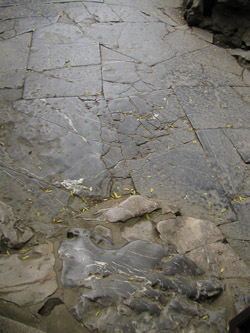Literati attention to nature was a practical matter. In an agricultural and pre-industrial economy, nature was the stuff of the world, and the world was nothing but this.
Literati sought to understand nature and then to construct its role in their lives, both manipulating its possibilities and constructing their desires to correspond with these.
Observation and analysis were employed to find pattern in nature. Kinds of propensity (勢 shi), identified the directions in which matters were unfolding, as seen in the force of growth, water flow patterns, geology, weather’s consequences on flora and fauna, and processes of decay. Propensities combined as an integrating holistic ecology. Art sought to visualise this, and to extract from it a means to create works that themselves had 'a sense of life.’ Through this literati culture sought to align human lives with the force of nature and history.
Natural images and objects were also taken as the building blocks of poetry and metaphor, becoming the stuff of culture. Otherwise autonomous plants, animals and stone were 'civilized,' so that the living world became familiar and readable. This also created the magical impression that culture was expressed by nature, and in time the weight of generations of cultural meaning became pervasive and inescapable.
| | 
 |